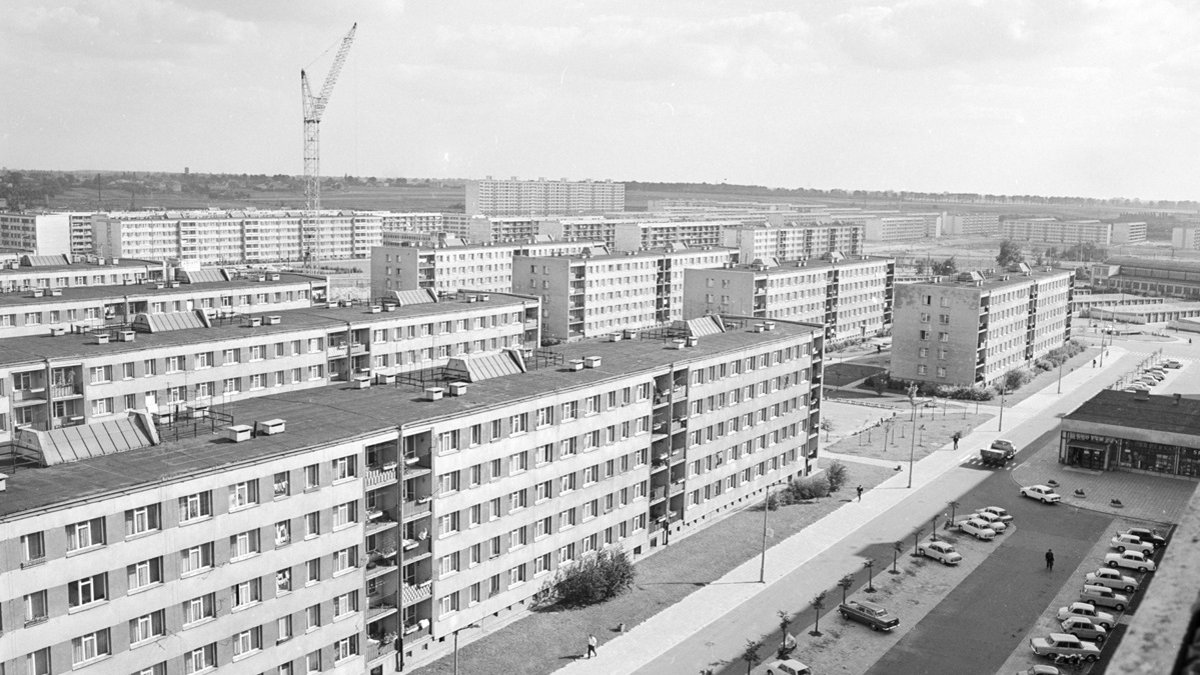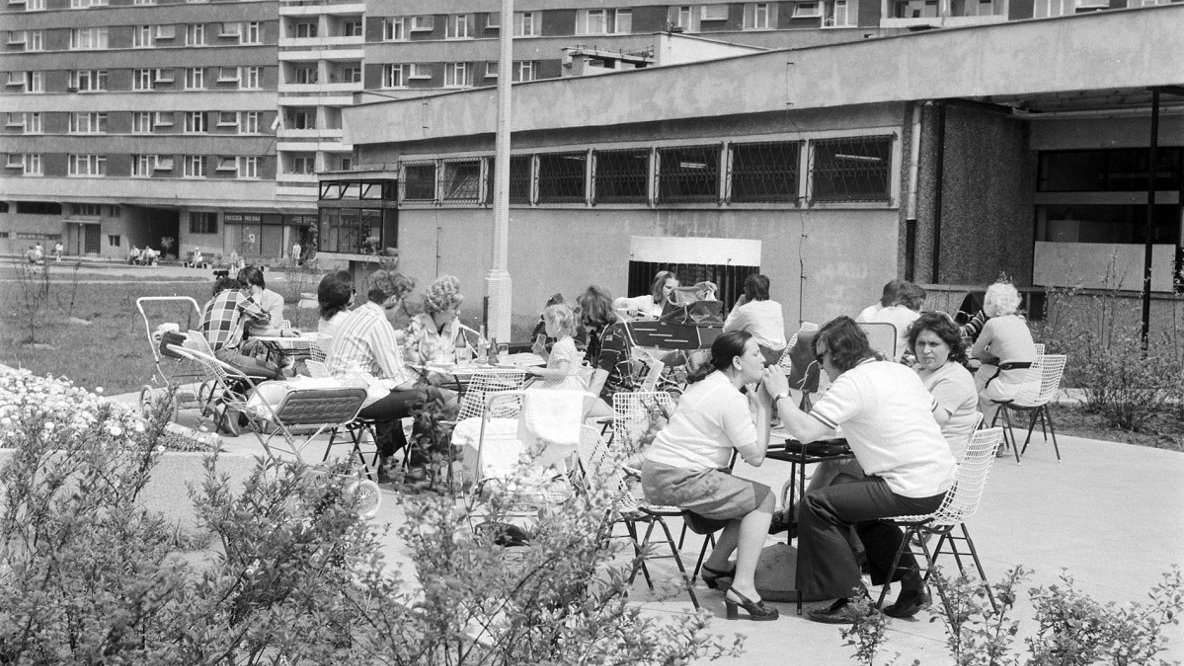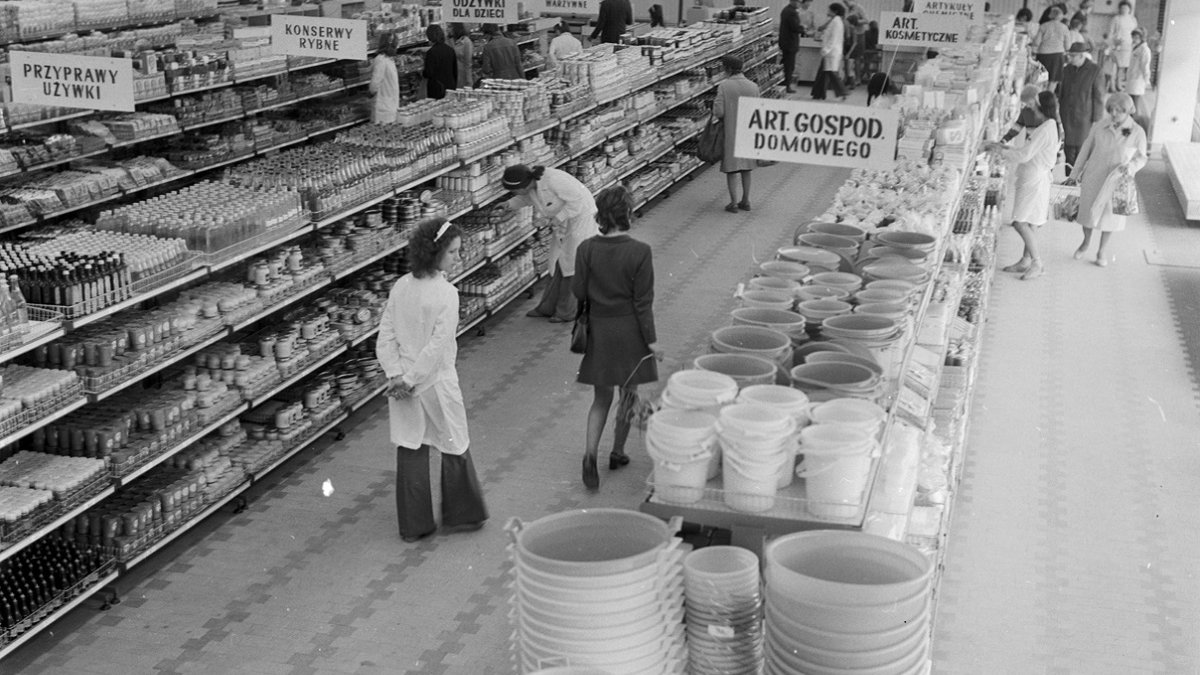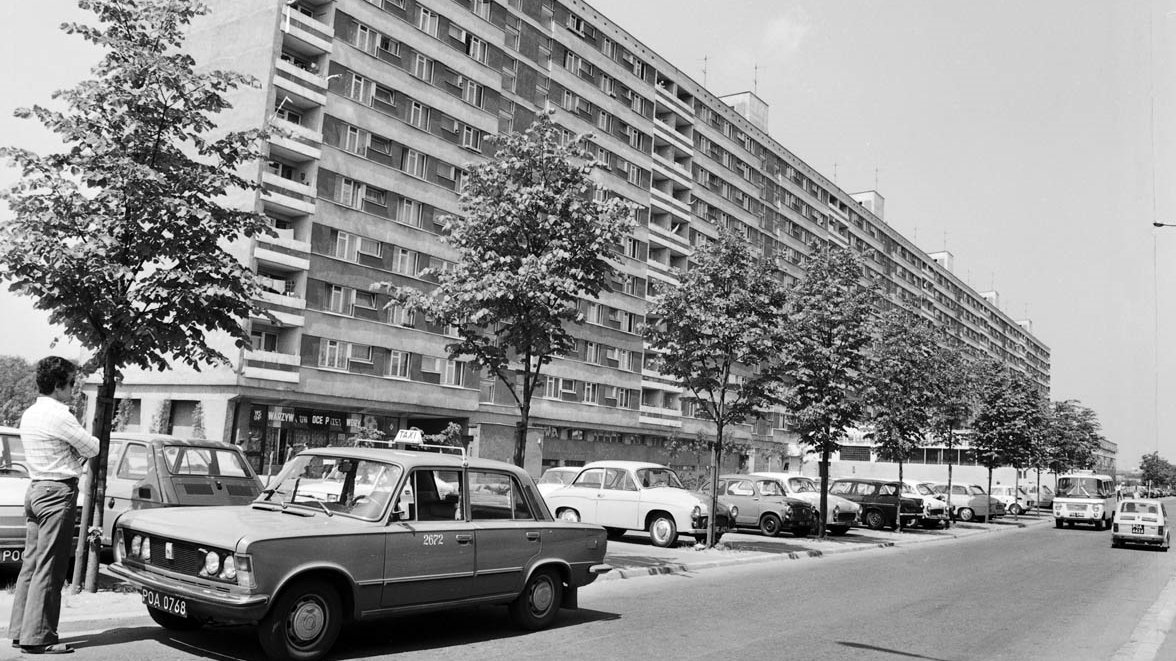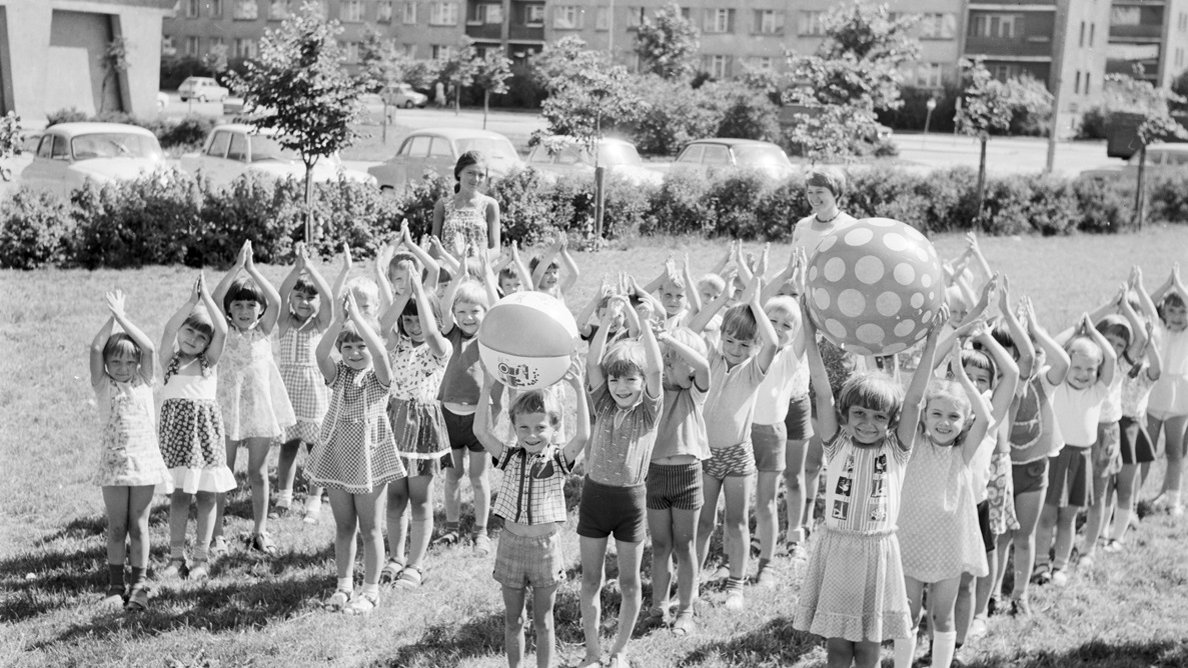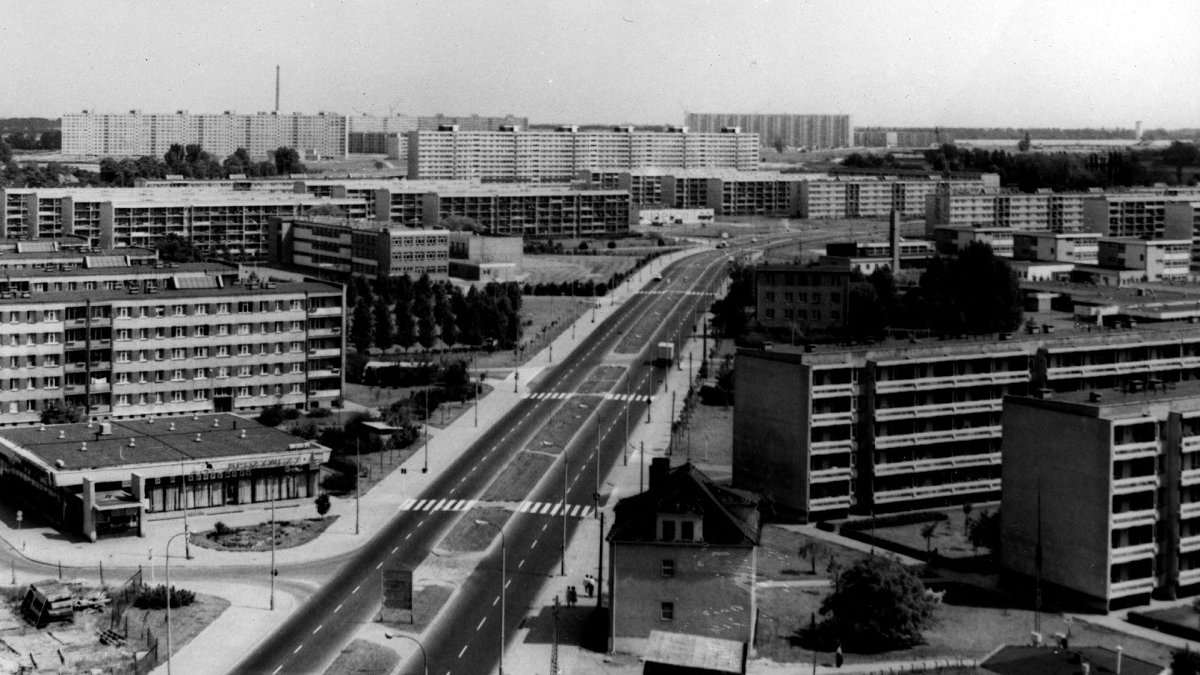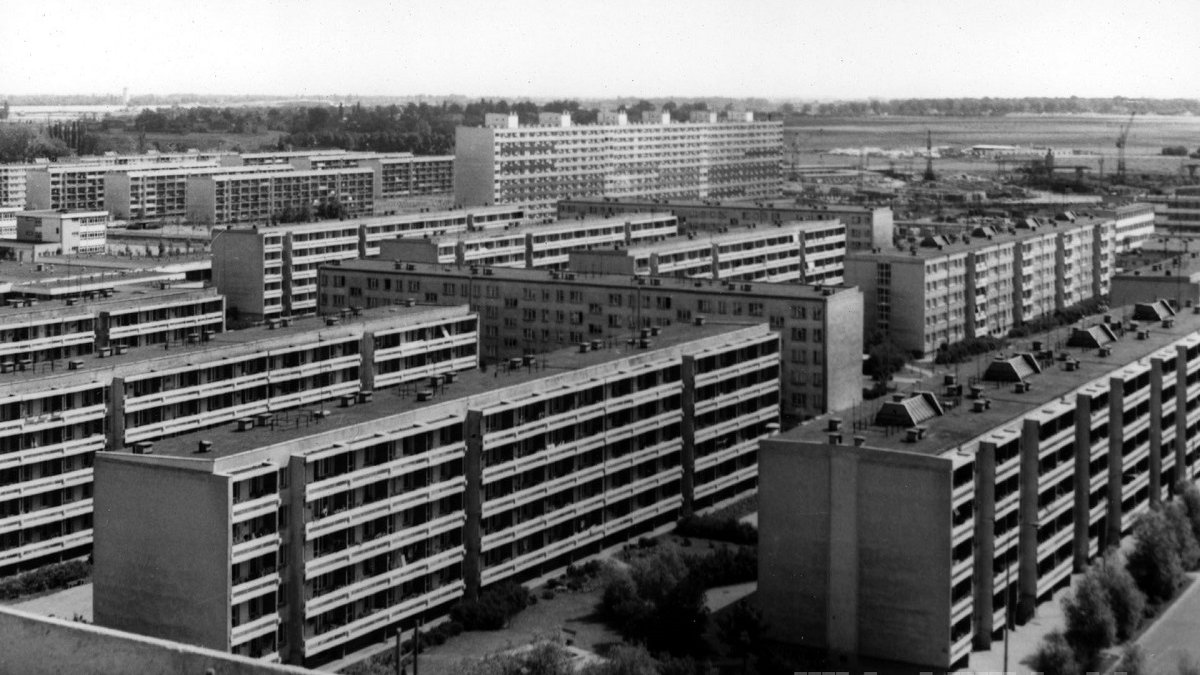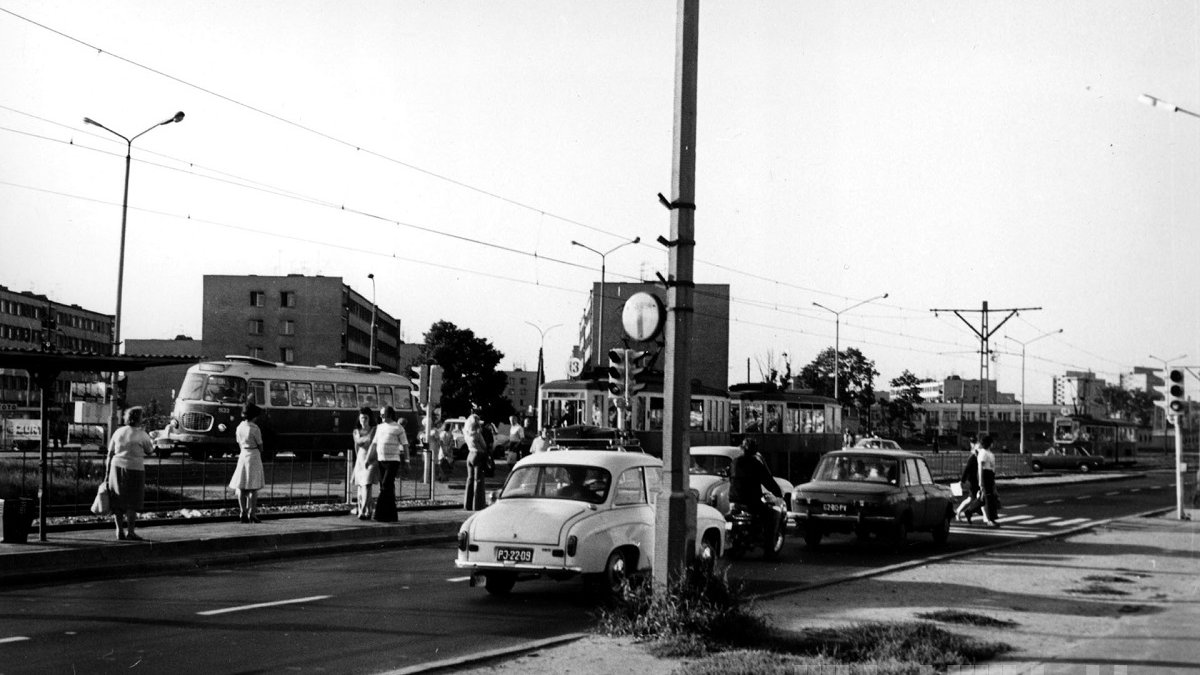Rataje: From Rural Settlements to Prefabricated Concrete-Slab Estates
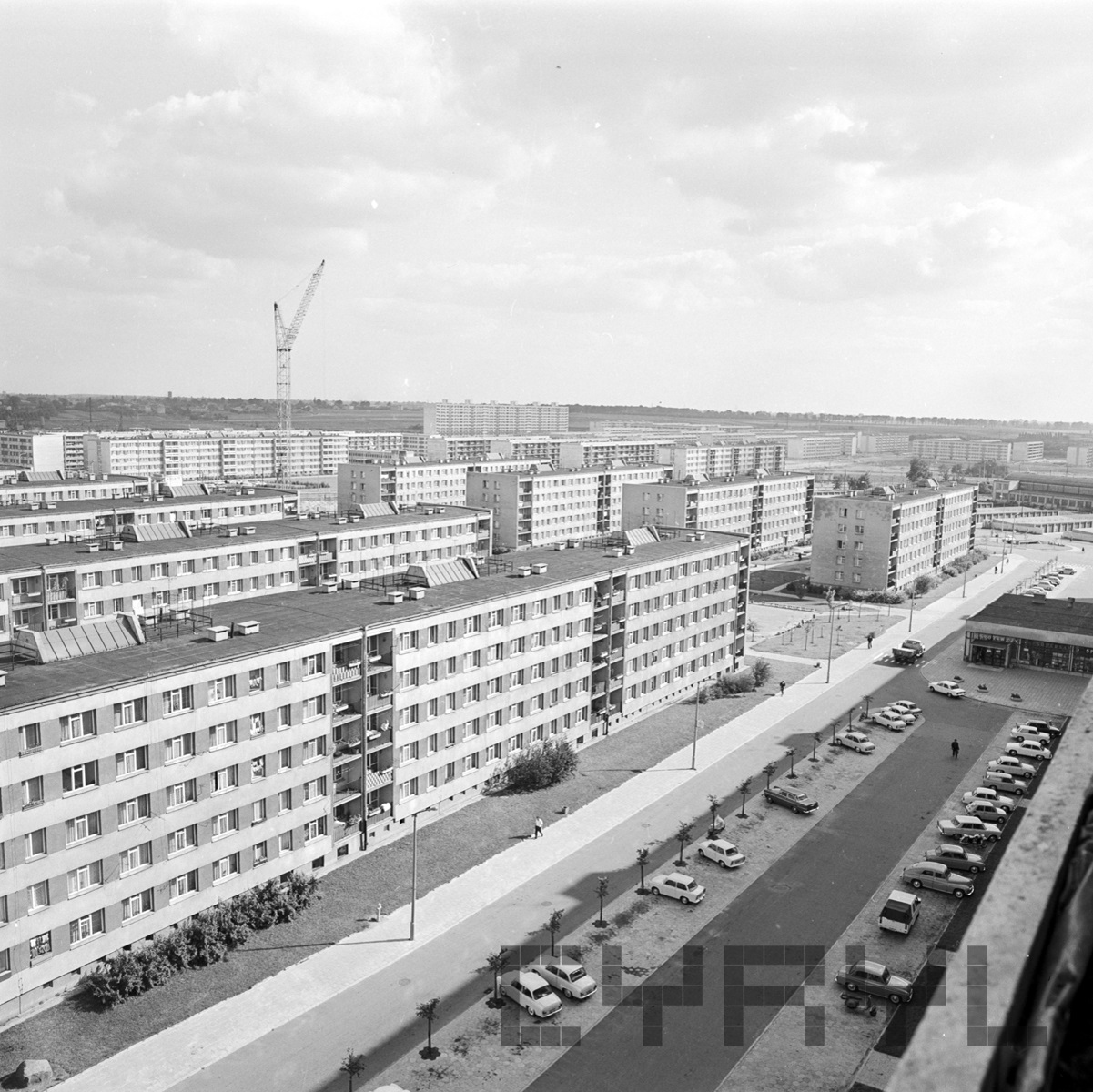
The village of Rataje was incorporated into Poznań a century ago, in 1925. Initial concepts for developing the area surfaced a few years afterward, but it wasn't until the late 1950s that the final decision to construct residential estates was made.
Rataje was a historic settlement, already referenced in Poznań's founding charter. Over the centuries, it was repeatedly depopulated by war and pestilence, only to be rejuvenated by the arrival of the Bamberg settlers and later Bulgarian gardeners. It is no surprise that people wanted to settle here as Rataje boasted fertile black soil. One can only imagine the anguish of local farmers upon being forced to leave their land. Towering cranes invaded the idyllic landscape, shattering its former tranquillity, while the remaining village dwellings were increasingly hemmed in by concrete blocks of flats. Thus commenced the most extensive post-war urban development in Poznań. Today, lush with trees and other greenery from its famously fertile black soil, and conveniently close to the city centre, Rataje has transformed from a bleak communist-era housing estate into a welcoming residential neighbourhood.
The latest exhibition at the Poznań Fotoplastykon showcases the architecture of the so-called lower terrace of Rataje (including the Piastowskie, Jagiellońskie, Oświecenia, Rzeczypospolitej, Bohaterów II Wojny Światowej, Powstań Narodowych, and Armii Krajowej estates) and the lives of its former residents.
In today's usage, the term Rataje commonly encompasses not just the historic Rataje settlement but also the villages of Chartowo and Żegrze, both annexed to Poznań in 1940, later developed into housing estates in the 1970s and 1980s, forming the so-called upper terrace of Rataje.
The photographs featured here come from the photo collection available on the cyryl.poznan.pl portal and the archives of the Osiedle Młodych Housing Cooperative, Town Hall: Museum of Poznań, Posnania Municipal Publishing House, Raczyński Library, and Poznań Branch of State Archive.
translation: Krzysztof Kotkowski
"Rataje: From Rural Settlements to Prefabricated Concrete-Slab Estates" - an exhibition in the Poznań Fotoplastykon
Centrum Informacji Kulturalnej (Cultural Information Centre), ul. F. Ratajczaka 44
5.05. - 31.07.2025; opening hours: Monday - Friday 10 am - 6 pm, Saturday 10 am - 5 pm, Sunday and holidays closed, last admission 1 hour before closing time
tickets: regular admission - 6 pln, reduced admission - 3 pln, family tickets - 12 pln, group tickets (groups of 10 or more) - 25 pln
© Wydawnictwo Miejskie Posnania 2025


